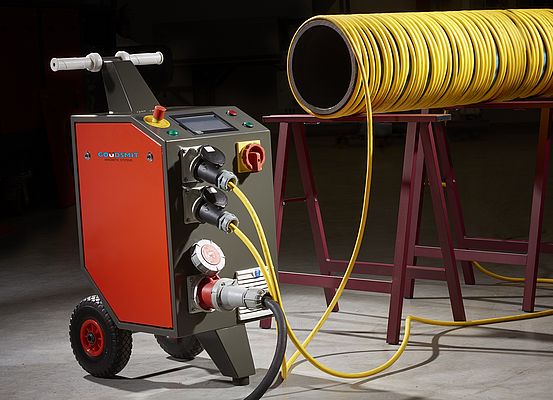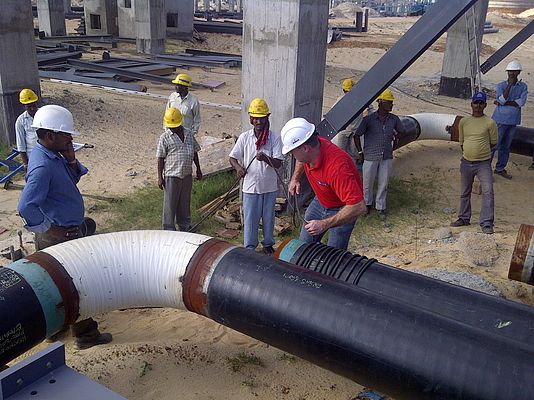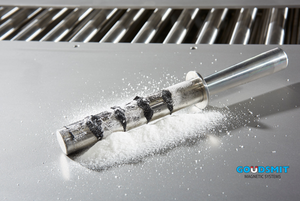To have the magnetism disappear or to reduce it to a workable level, Goudsmit has developed a system that consists of a low frequency generator and a specific cable system. This cable system is wrapped around the pipelines as a coil. This causes a strong variable magnetic field in the pipelines that decreases in strength to 0. The consequence thereof is that the remanent magnetism disappears or is reduced to a workable value of approx. 35 Gauss. In this case it concerned approx. 40 pipelines of carbon steel, each with a length of 12 meters and a diameter of ø470mm. The activities took 4 days.
Demagnetizing
The causes of remanent-magnetism of materials can be various and difficult to classify in practice. However, they are usually caused by magnetic fields in the area, intentionally or unintentionally. For example, by clamping surfaces, magnetic transport, induction heating, tear tests, magnetic grippers etc. But this magnetization is also strengthened by electrical welding, mechanical vibrations, grinding, sawing and cold deformation. The consequences are usually very divers. Plasma soldering is usually impossible, small metallic particles and metallic dust remain sticking, increased wear in case of lagers, fallout and waiting time in case of automatic processing stations due to clinging materials, problems with electrical welding, unevenness and thickness differences in case of electrical zinc coating and chroming, sharp edges when galvanizing etc.
In the abovementioned case, the pipelines could not be welded together because of arc deflection. This can cause lack of adhesion and is therefore not desirable. In short: undesired remanent-magnetism costs time and money and influences the quality of the end-products. To prevent this, the company has developed a number of demagnetizing systems in tunnel form (possibly with (slat) conveyor), in table form (if needed with (slat) conveyor), as a manually-operated device or low frequency as mobile unit. When the investment in these is not profitable, the magnet producer also offers the possibility to do this on location or in-house.
Demagnetizing system for customer use
The company also has developed a mobile demagnetization system with which remnant magnetization in metals can be removed or reduced to an acceptable level. This is done in site, on location. The system is completely designed for customer use, without intervention of a specialist. It consists of a low-frequency generator and a specially designed cable system that is wound around the pipes to form a coil. This generates a strongly alternating magnetic field that dissipates in strength. The demagnetizer is automatically configured for use by simply answering a number of questions on the display. Undesired magnetism is often caused by magnetic fields in the immediate vicinity. Common causes include clamping tables, magnetic conveyance, induction heating, tear testing and magnetic grippers. Such magnetization can also be worsened by electric welding, mechanical vibration, grinding, sawing and cold deformation. This can have many different consequences. Plasma soldering is often impossible, because small metal particles and metal dust stick to the surfaces. Adhering materials also cause rapid wear of bearings, breakdowns and waiting time at automatic processing stations, problems with arc welding, unevenness and thickness differences during electro galvanization and chrome plating, or sharp edges during hot-dip galvanization. Quite simply: undesired magnetism costs time and money and has a negative impact on the quality of finished products.



















